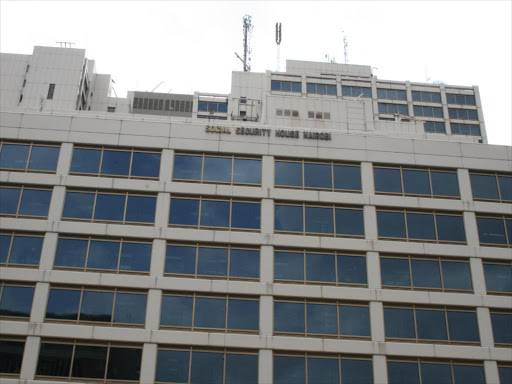Business
How NSSF Act’s Implementation will Impact both Employees and Employers

President William Ruto’s social security plan, which includes increasing monthly contributions to the National Social Security Fund (NSSF), has moved one step closer to implementation after the Court of Appeal overturned a decision that had blocked the tenfold increase in subscriptions.
The three-judge panel overturned a September decision by the Employment and Labour Relations Court that found the NSSF Act 2013 to be unconstitutional.
The NSSF sought to increase its retirement pot and offer workers monthly stipends after retirement under the Act, as opposed to the current one-time payment.
The last time the contributions were reviewed was in 2001, when the rate was raised from Sh160 to Sh200.
As of June 2021, the NSSF had 348,291 registered members and a Sh284.9 billion investment portfolio. Savings climbed by 10% last year, beating inflation.
The appellate court’s bench, which was made up of Hannah Okwengu, Mohammed Warsame, and John Mativo, decided that the Employment Court had improperly exercised its jurisdiction over a case that belonged in the High Court.
The judges agreed with the NSSF attorney, Senior Counsel Fred Ngatia that the Employment Court can only hear a case where constitutional issues are raised in the context of an employer-employee dispute. Employment cases are not the proper mechanism for the ventilation of grievances of the litigant’s constitutional issues, unless those issues arise in an employer-employment dispute, according to the judges.
How will the NSSF Act’s implementation impact workers?
The NSSF’s strategy to put the Act into effect was still hampered by the legal dispute. As a result, top incomes will now be subject to deductions up to Sh1, 080 instead of the existing Sh200. Within the following five years, this number might rise even further.
Will making pension contributions be required?
The Pension Fund and a Provident Fund are established by Section 18 (1) of the NSSF Act 2013; nevertheless, Section 18 (4) stipulates that all individuals who are over 18 and are covered by the Employment Act of 2007 must also be members of the Pension Fund.
According to Section 18(3), all individuals who had membership in the provident fund under the previous NSSF Act must establish a new provident fund, and employers must deduct the contributions from employees’ pay checks.
What will workers be expected to pay?
The NSSF Act of 2013 raised the monthly deductions for salaried employees from Sh200 to Sh600 for the lowest earner and from Sh320 to Sh1, 080 for the highest income. The maximum donations are expected to increase yearly.
Maximum pension contributions for both the employee and the worker are set at Sh4, 136, or 12% of the suggested maximum pensionable earnings of Sh34, 476.
Employers and employees were required to contribute 6% each.
The State had planned to stretch the payment over five years in order to lessen the strain on the workers. The top earners would pay more than Sh15, 000 per month, with their employers topping up an equivalent amount in the fifth year.
How will the law be put into practice?
The government set a ceiling for the 12 percent charge in the first year at Sh34, 476, which translates to a maximum monthly recovery for the NSSF of Sh4, 136.
While the low earners were required to pay Sh360, or 12 percent of the minimum salary, which had been established at Sh6,000 under a tiered system aimed to combat senior citizen poverty, the highest earners would pay half the amount at Sh2,068, up from the current Sh200.
Tier I and Tier II payments were to be separated into two categories for workers making more than Sh18, 000. For persons with pensionable wages up to the lower earning threshold of Sh6, 000, Tier I contributions were required.
Contributions made in relation to pensionable earnings over the lower earnings limit are referred to as Tier II contributions.
Tier I participants were required to make monthly contributions of up to Sh720, while Tier II participants were required to make monthly contributions of up to Sh1,440 based on incomes of more than Sh18,000.
Since they would pay six percent of the minimum salary, or Sh360, in the first year after gaining clearance from the Retirement Benefits Authority—the industry regulator—workers who have already joined up for an occupational scheme have been provided respite.
The balance, which will rise to Sh540 in the fifth year, was set up to protect company-sponsored pension plans from dissolution because it was expected that most firms would abandon occupational pension plans in favour of the statutory fund.
Who raised a challenge to the 2013 NSSF Act?
The Kenya Tea Growers Association (KTGA) and Agricultural Employers Association (AEA) were the first organizations to challenge the statute; later, the Federation of Kenya Employers (FKE), Kenya County Government Workers Union, and other organizations joined them.
The respondents in the action included the NSSF board of trustees, the Labour Cabinet Secretary, the Competition Authority, the Revenue Benefits Authority (RBA), and the Attorney General.
By arguing that the petitions were originally filed in the High Court but were later moved to the Employment court by then High Court judge Mumbi Ngugi on the grounds that social security and employment-related issues fall under its purview, KTGA and AEA attempted to save the case at the Court of Appeal.
The parties later sought and were granted a bench of three judges who delivered their decision last year.
KTGA and AEA questioned the constitutionality of the Act, arguing that it imposes on employer’s additional liability by requiring them to pay enhanced contributions towards their employees’ accounts in the fund.
The petitioners also questioned the constitutionality of employees being made to pay enhanced contributions when they had a contract of service with various employers.







